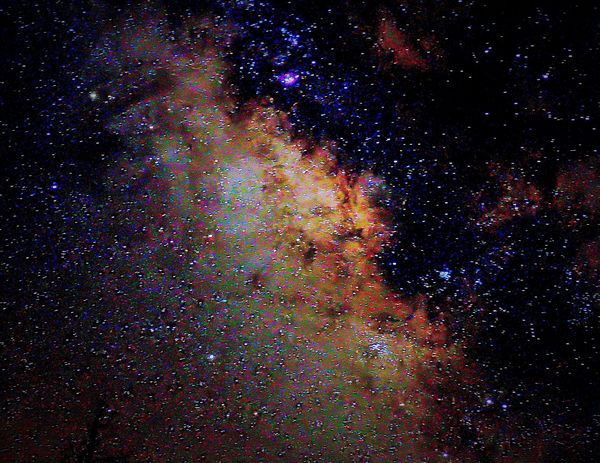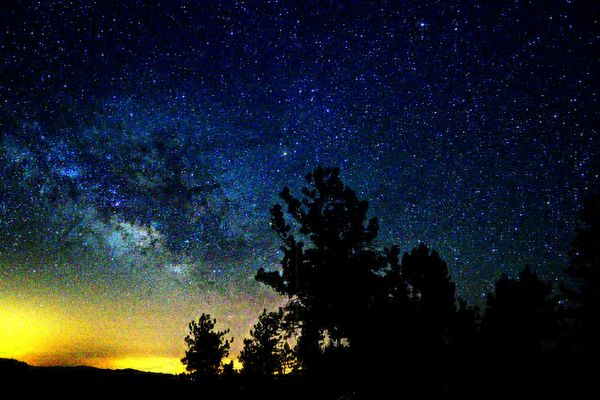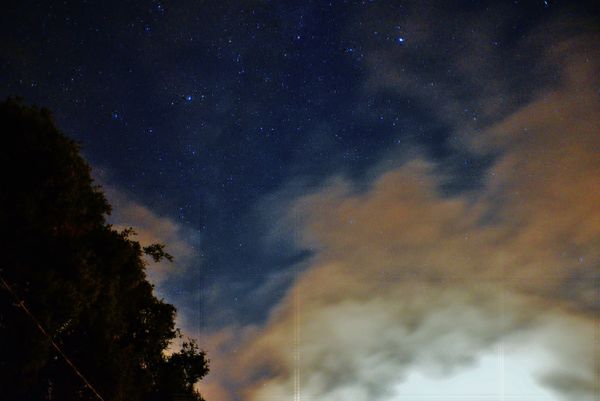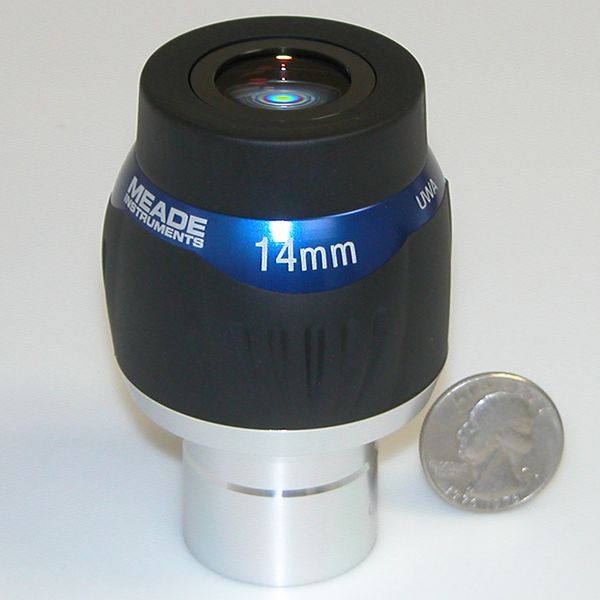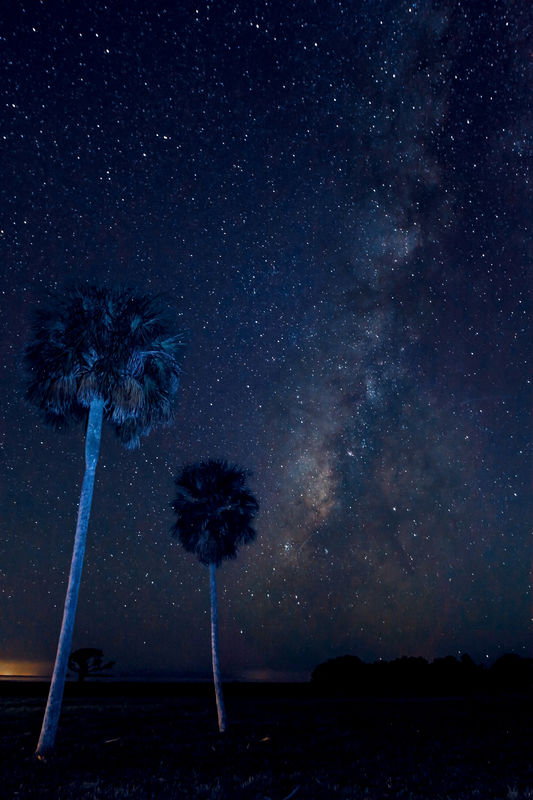Milky Way
Feb 13, 2015 14:10:28 #
Some older shots of the Milky Way I took last summer when I was first starting to do Astrophotography. I'll do better this year.
Craig
Craig
Feb 13, 2015 15:23:29 #
Feb 13, 2015 15:36:59 #
guts wrote:
Hi Guts. Thanks, I just shot those with a Tripod. This year I have that old Celestron drive I've converted for my Camera and Lens to do wide angle and Telephoto work. The Celestron cost me $50.00 at a garage sale.Looks pretty good to me for just beginning.
Feb 13, 2015 19:49:37 #
I need to get a wide angle lens somewhere around a 14mm meade makes one with 82deg view for 129.00 any thoughts on something like this?
Feb 14, 2015 09:44:38 #
guts wrote:
If it's the Meade Series "5000" Ultra Wide Angle 14mm Eyepiece (1.25" ). That is the going price and it is a good Lens in my opinion. With an 8" scope, 10mm is as low as you want can go and still get good viewing. Any smaller than 10mm things get really washed out. Hope that helps.I need to get a wide angle lens somewhere around a 14mm meade makes one with 82deg view for 129.00 any thoughts on something like this?
Feb 14, 2015 11:05:59 #
dlmorris
Loc: Loma Linda, Ca
Hi Craig! I'd like to see the original images. The first two look over processed... But hay, they are your first attempt! The third one is pretty good. As for a lens, I'm currently using a Tamron 16-300. I also have a Bower 8mm which gives reasonable results. I'm not sure of the field of view, though. It is close to horizon to horizon, but not totally. Probably around 120 degrees. Then I have a true fish eye lens, which I haven't tried for astronomy yet, except in my own front yard.
A telescope eyepiece is a totally different thing. That Meade 14mm eyepiece gives an *apparent* 82 degree field of view. NOT a view of the sky covering 82 degrees.
A telescope eyepiece is a totally different thing. That Meade 14mm eyepiece gives an *apparent* 82 degree field of view. NOT a view of the sky covering 82 degrees.
Feb 14, 2015 11:27:45 #
The first thing to work on is the noise. There is considerable noise present. One technique is to take multiple shots and to use SW to stack them into a single image. One quick method I use on my Sony bodies is to use multi frame noise reduction. It fires 6 shots and then combines in camera. Can only do JPEG with this method, but the noise is greatly reduced. Allow me to shoot at 6400 or even higher ISO. But the shutter time maxes out at 30 sec per shot.
Keep working on it and they will get better and better.
Keep working on it and they will get better and better.
Feb 14, 2015 12:48:22 #
CraigFair wrote:
Craig,That helps a lot glad you said something,I was gonna order a 8mm at the same time,Thanks Bill.If it's the Meade Series "5000" Ultra Wide Angle 14mm Eyepiece (1.25" ) That is the going price and it is a good Lens in my opinion. With an 8" scope, 10mm is as low as you want can go and still get good viewing. Any smaller than 10mm things get really washed out. Hope that helps.
Feb 14, 2015 15:18:32 #
dlmorris wrote:
#1 All 3 are terribly over processed in Microsoft Photo Gallery. Very crude sharpening and no noise reduction. Star trails because I was shooting off a fixed Tripod. Things are totally different this year, a Nikon D800e with good High ISO capabilities, a Tokina 16-28mm f/2.8 Lens, Lightroom and Topaz Detail3, Infocus & Denoise. And a Celestron computerized drive converted to fit my Camera & Lens. I'd like to see the original images.
#2 There is a formula for figuring the true Field of View of a Telescope Eyepiece. Does someone know it??? I forgot. He has a 8" x 800mm with the 14mm 82* Lens.
Feb 23, 2015 15:58:56 #
Nice captures Craig... I am going to try star groups and planets when it gets warmer... what equipment and setting did you use?
Feb 23, 2015 16:11:04 #
brucew29 wrote:
Thank you Bruce,Nice captures Craig... I am going to try star groups and planets when it gets warmer... what equipment and setting did you use?
#1 28-300mm @ 38mm, 20 sec, f/4, ISO 6400
#2 17-50mm @ 17mm, 25 sec, f/4, ISO 6400
#3 17-50mm @ 20mm, 5 sec, f/2.8, ISO 6400
PS I'll be out with my Tamron 150-600mm tonight on the Celestron Drive base.
Feb 23, 2015 16:25:18 #
northcoast42
Loc: Puget Sound, Washington
These are good first attempts Craig. I've done some Milky Way photography with my DSLR on a fixed tripod. To avoid the star trails, a good rule of thumb is the "rule of 500." Devide 500 by your lens objective and that's about your max exposure before star trails become evident. I used a 16-35mm lens on a 1.6 crop DSLR (about 26mm). Devided into 500 give me a max exposure of about 20 seconds. I got reasonable results around iso 3200 with a 20 second exposure. Still slight star elongation but not too noticable from a distance. Of course, if you start using a tracking mount, no worries. Having a dark sky is also very helpful. As for processing, one program you might consider is Lightroom. It does a pretty nice job with these types of images.
Feb 23, 2015 16:41:16 #
northcoast42 wrote:
Nice shot NorthCoast, I really like the settings you used at ISO 3200.These are good first attempts Craig. I've done so... (show quote)
Now that I have the right equipment and a little experience there's no reason I cant get as nice a shot as you have. Palms
Feb 23, 2015 17:04:52 #
northcoast42
Loc: Puget Sound, Washington
CraigFair wrote:
I look forward to seeing great images! :thumbup:Now that I have the right equipment and a little experience there's no reason I cant get as nice a shot as you have. Palms excluded.
If you want to reply, then register here. Registration is free and your account is created instantly, so you can post right away.

